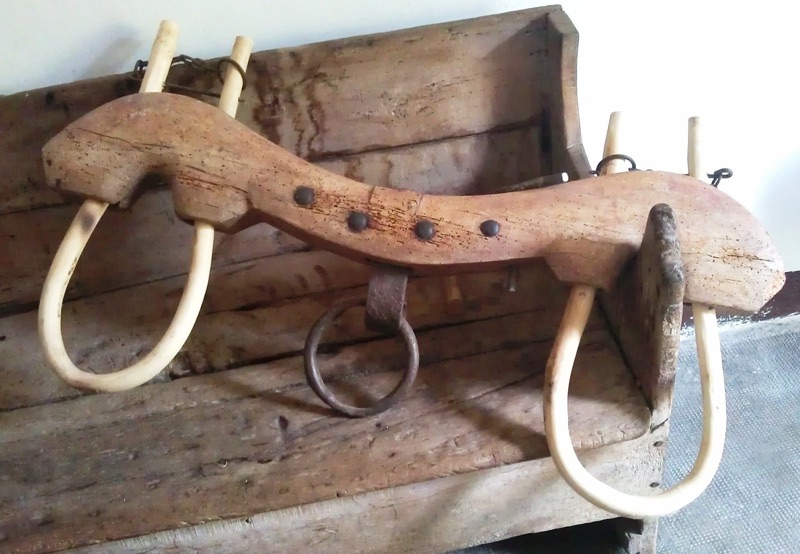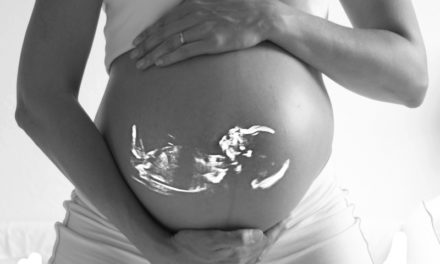The bones of service—the ones we use in helping others or ministering to our own bodily needs—are those in the appendicular division. These include the 120 bones in our arms, hands, legs, and feet, and the 6 specialized bones of the shoulders and hips. We will think of these 6 bones as the yoking bones.
THE YOKE
A yoke connects an implement of service to the power source. All are necessary. In our body the implements are the arms, hands, legs, and feet, operated by muscles and tendons. The yokes are the pectoral and pelvic girdles where the tendons attach. And the power source is the part that keeps our limbs supplied with life and energy, the trunk of the body.
The gospel tells us that before we can truly and effectively love others, we must be connected to the Power Source.
Matthew 11:29-30 Take my yoke upon you, and learn of me; for I am meek and lowly in heart: and ye shall find rest unto your souls. For my yoke is easy, and my burden is light.
John 15:4-5 Abide in me, and I in you. As the branch cannot bear fruit of itself, except it abide in the vine; no more can ye, except ye abide in me. I am the vine, ye are the branches: He that abideth in me, and I in him, the same bringeth forth much fruit: for without me ye can do nothing.
We usually think of a yoke as oppressive, tiring. It may feel okay in the morning when we are fresh and strong. But by evening it appears very heavy and we are left blistered and sore. As we enlist in Christ’s service to love and minister to those around us, must we expect an eventual wearing down, a predictable fatigue, a desire for at least temporary relief from His demanding yoke?
Such a yoke would certainly suggest that God is a hard task-master; however, the Word of God does not support this idea. Jesus says that His yoke is easy and His burden light. This same lesson is repeated in our body temples. We will now go to the left rail, the physical side of the counterparts, to gain insight that will help us better understand the spiritual enigmas.
THE CONNECTING LINKS
The pectoral girdle includes the four bones of the shoulders: two clavicals and two scapulae. The pelvic girdle is composed of the two hip bones, the os coxae. These 6 bones are the only flat bones in the appendicular division.
In the adult, flat bones are the regular sites for red (RBC) and white (WBC) blood cell production. During periods of extreme blood loss other bones and organs can assist. Red blood cells are the oxygen carriers of the blood and are scripturally referred to as the “life of the flesh”1. White blood cells are the soldiers or protectors of the body and a vital part of our ever vigilant immune system. How long would you like to be without the manufacturing sites for these precious RBC’s and WBC’s? That’s one thing your yoking bones do!
These appendigal yokes contain the skeletal system’s most flexible joints, the ball and socket, allowing our arms and legs the greatest freedom of movement possible. Do you ever tire of this flexibility?
They also provide attachment sites for the limbs’ strongest muscles. If you removed these yokes at the end of the day, you would remove the ability to operate some very important muscles! Have second thoughts? What a treasure house God has given us in these yoking bones! What would our limbs be without them?
The same is true in the spiritual realm. If we are truly connected to God through the person of Jesus Christ as our personal Savior and desire to follow His example, our spiritual immune system, our flexibility in service for others, and even some of the very acts of faith we want to do for God will be restored, improved, and satisfied.2
Isaiah 40:31 But they that wait upon the LORD shall renew their strength; they shall mount up with wings as eagles; they shall run, and not be weary; and they shall walk, and not faint.
With Christ as our Yoke, we are assured of all the strength and efficiency needed for the day’s work. How could we ever want to be without this Yoke?!
A PROBLEM
We have a problem, however. The Scriptures appear to be talking about a single yoke in Matthew 11:29-30, but our body suggests two kinds of yokes! Remember, nature and revelation speak in harmony.
At first the bodily yokes appear to be very similar: both are composed of only flat bones, both contain the rare ball and socket joints, both provide attachment sites for very strong muscles, and both are designed to carry heavy loads. Yet, in spite of these similarities, the pectoral and pelvic girdles describe two differing characteristics of Christ’s yoke.
TWO KINDS OF YOKES
The shoulder girdle defines a yoke of restriction. Restriction implies potential of movement, but with limitations. If we talk about restricting a huge boulder, we would be referring to one that has possibilities of falling down or rolling away. The bones in the pectoral (shoulder) girdle that are restricted are the scapulae. (We often refer to them as the shoulder blades.) These bones do not have a direct connection to the axial skeleton, but instead appear to “float” over the back of the shoulders. This freedom, however, is supported as well as restrained by the clavicals (we also call them collarbones). These rodlike bones are attached directly to the breastbone of the ribcage.
The pelvic girdle, on the other hand, allows only the slightest movement, for the os coxae (hip bones) are attached directly to the trunk via the sacrum. There is no freedom of movement here! There are no conditional liberties, no qualifiers with this kind of yoke. Independence of action is nil. Whatever is commanded is done to the letter. Such a bond emphasizes authority and obedience. Such bonding is illustrative of master/servant, parent/child, teacher/student, employer/employee, and especially Creator/creature.
The dual nature of Christ’s yoke appears in the grapevine/branch illustration of John 15. Jesus says in verse 10 that we abide in Him by keeping His commandments (plural). [These were not the 10 Commandments. Those were His Father’s which He said He Himself kept.] Christ then proceeds to give us His two commandments.
[Remember, the body suggests the yokes will appear to be the same, but aren’t!]
THE FREEDOM YOKE
John 15:12 This is my commandment, that ye love one another, as I have loved you.
The part of this yoke that seems to have so much freedom (the scapulae) is indicated in verses 14 and 15. Friends have more liberties than servants. The rodlike clavicals that brace this freedom yet limit it are pictured in Christ’s words, “as I have loved you.”
I am often amazed at what my children would do as long as I held their hand: endure pain, face scary situations, brave hardships, perform courageous feats. That connecting link between parent and child is powerful! David expressed it this way as a shepherd:
Psalm 23:4 I will fear no evil: for thou art with me; thy rod and thy staff they comfort me.
David is using shepherd language here, and speaking from a sheep’s perspective. The rod and staff are symbols of a shepherd’s office. Some commentators believe the rod and staff are two names for one instrument, the shepherd’s crook, which is used for guidance and protection. This allusion, of course, directs the mind to the Great Shepherd, Christ, who stands before the flock to lead it and protect it. And we, as sheep, are comforted knowing that One so loving and powerful is able to keep us and provide for us. The clavicals’ position in the upper part of the body, close to the head, also underscores this application to our defender, who John 15:12 says leads by example.
Christ’s example, the rod, is a comfort, even though it limits our freedom. Perhaps one reason is that the other end of that rod is securely attached to the breastbone, or “breastplate” of Godly judgment. [We’ll get more into the breastplate in chapter 9.]
Exodus 28:15 And thou shalt make the breastplate of judgment with cunning work.
In this command Christ calls us His friends. We follow by association, observation, appreciation—the “stuff” of friendship.
This yoke, the pectoral girdle, is also significant in that it is located in the upper half of the body (another division that is often respected in society). This part of the body is used more for public than private associations. The extensions of this part of the body, the hands, are used freely for everyone. When two strangers meet, it is customary to connect by touch in this area, like with a handshake, or by tapping one’s shoulder or arm to get their attention. If that same stranger touches you below the waist an entirely different message is given!
THE COMMAND YOKE
John 15:17 These things I command you, that ye love one another.
This seems to be the same command as in verse 12, doesn’t it? But notice the absence of a qualifier here (as I have…). This is a straight command. Obedience here is based solely on the authority of the Lawgiver. In verse 20 the master-servant relationship is emphasized. Christ explains that such yoking is essential when earthly support fails, when everything around you is expressing hatred.3 Some situations may appear to us strange and confusing. In these cases Christ simply tells us to do exactly what He says, no questions asked. He assures us that such unquestioned obedience will prove an effective witness for Him.4
This is supported by the yoke that is its counterpart, the pelvic girdle (in the lower half of the body). This is the area for more intimate associations—master/servant, husband/wife, parent/child, boss/worker. We use many phrases and actions supporting this lower but more intimate relationship.
- Raising children “on our knee”
- having loved ones sit on our lap
- family “roots”
- Abraham having his servant take an oath by placing his hand under Abraham’s thigh (Gen. 24:2)
In comparison, the two large bones of the pelvis surround the most intimate part of the body and allow for no noticeable movement.
Both the freedom part of the yoke and the command part of the yoke describe a union with Christ we must have before we can expect a fruitful return for Him. Can we read it this way? ”Take my yoke upon you–the yoke of restraint and obedience–and learn of me.”
THE RIGHT AND LEFT SIDES
Our body points us to one more aspect of yoking. It says that there are right and left sides! This we must not overlook, for to have one side paralyzed, crippled, or weakened reduces our grace and efficiency in public. So it is in the body of Christ.
The right is the side of faith, the side where God hides Himself.5
JOHN 21:6 And he said unto them, Cast the net on the right side of the ship, and ye shall find. They cast therefore, and now they were not able to draw it for the multitude of fishes.
In the classic book on the life of Christ, The Desire of Ages, page 811, the author makes an interesting comment on the above verse.
“And Jesus had a purpose in bidding them cast their net on the right side of the ship. On that side He stood upon the shore. That was the side of faith. If they labored in connection with Him, –His divine power combining with their human effort, –they could not fail of success.”
In faith action is not apparent to the human observer. Man can avail himself of God’s promises any time, however, just by taking God at His word. Our reaching out to others must have this element in it or we cannot please God (Heb. 11:6).
The left side is that of works, or strength.6
I Kings 7:21 (margin) And he set up the pillars in the porch of the temple: and he set up the right pillar,and called the name thereof Jachin [he shall establish], and he set up the left pillar, and called the name thereof Boaz [in it is strength].
This, in contrast, is the visible or practical aspect of service. How much we need this! With the right side we reach toward heaven. With the left we reach earthward.
I John 3;17-18 But whoso hath this world’s good, and seeth his brother have need, and shutteth up his bowels of compassion from him, how dwelleth the love of God in him? My little children, let us not love in word, neither in tongue; but in deed and in truth.
SUMMARY
In order to give the gospel message to those around us, we must first yoke up with Christ, connect to the Vine. This divine connection with Him provides every blessing needed to fulfill His will: strength, motivation, support, variety, protection, comfort, and in some cases, even life itself! This yoke, we have found, is truly easy.
One aspect of His yoke is freedom–freedom to love and to do–but with the limitations of Christ’s illustrations. As long as we keep our eyes fixed on His examples as recorded in the Bible, we will be supported in our ministries and comforted by His good judgment.
The other feature of Christ’s yoke is unqualified obedience to His word. We obey because He is Lord and we wish to demonstrate our devotion. We don’t have to have everything minutely detailed and explained and reasonable before we comply.
By faith we become the physical channels of blessing to others, and in turn, receive personal benefits. So the Gospel promises.
The singular yoke connects us to Christ both by affection and service and proves to be an instrument of blessing to ourselves as well as the advancement of God’s kingdom. How awesome it is to learn these lessons from the Bible and our body!
Click here to go to the next chapter Composition of Law and Grace.
1Leviticus 17:11
2Isaiah 58:6-11, Matthew 6:33
3John 15:18-25
4verse 27
5Job 23:9
6Job 23:9






